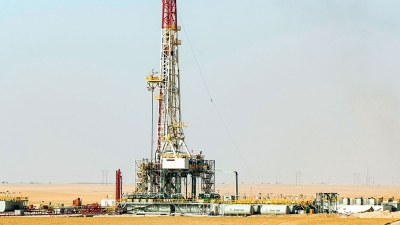
The Saudi National Atomic Energy Project (SNAEP) is a developmental economic project aimed at establishing a secure and efficient alternative energy sector in the Kingdom of Saudi Arabia. It seeks to meet the increasing demand for energy sources, achieving comprehensive sustainability. Announced on June 14, 2017, the project is overseen by King Abdullah City for Atomic and Renewable Energy (K.A.CARE). The nuclear fuel cycle is the third component of the project, representing the Kingdom's first step towards self-sufficiency in nuclear fuel production.
SNAEP Objectives
SNAEP aims to address the challenges faced by the Kingdom about energy due to the high consumption of fossil fuels resulting from high energy demand in the residential and industrial sectors. Statistics indicate a surge in demand by 2030, necessitating the provision of alternative energy sources to ensure a stable energy mix in the Kingdom, meet the energy demands for continued industrial thermal processes, and produce electricity and desalinated water in quantities that match the growing demand. Introducing atomic energy into the national energy mix also contributes to economic and investment growth, the prosperity of the energy industry, and the creation of numerous job opportunities. Additionally, investing in a peaceful, reliable, and environmentally friendly energy source diversifies energy resources, reduces full reliance on oil resources, and ensures a secure and sustainable future.
SNAEP Components
SNAEP comprises several key components, designed based on comprehensive studies by K.A.CARE, aligning with the nuclear and radiological regulatory requirements and standards set by the International Atomic Energy Agency (IAEA).
The first component is large nuclear reactors. These reactors, with capacities ranging from 1,200-1,600 MW each, support the base load of the electrical network year-round. This component includes preparing the infrastructure for the first nuclear power plant in the Kingdom, setting a suitable site for the construction of the plant, establishing the Nuclear Holding Company, conducting preliminary technical design studies, and examining reactor technologies.
The second component involves localizing and building small integrated modular reactors in isolated areas, such as high-temperature gas-cooled reactors (HTGR), and smart technology reactors suitable for use in petrochemical industries, thermal applications, and water desalination.
The third component of the project is the nuclear fuel cycle, representing the Kingdom's first step towards achieving self-sufficiency in nuclear fuel production. This cycle consists of two programs: the first focuses on training and developing human resources, qualifying Saudi scientists specialized in uranium exploration, and leveraging their expertise to develop the Kingdom's natural resources. This effort contributes to creating numerous job opportunities, fostering investment, and localizing the uranium oxide production technology sector. The second program involves the exploration and discovery of uranium and thorium ores within the Kingdom.
The fourth component is regulation and oversight. Established in 2018, the Nuclear and Radiological Regulatory Commission (NRRC) is an independent body responsible for ensuring nuclear and radiological safety and security through regulatory processes, ensuring national commitment to society and the environment, and to the international community.
Related quizzes

